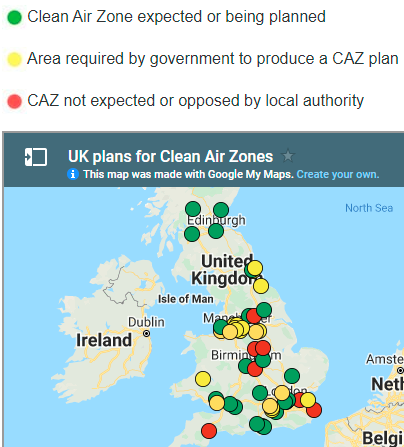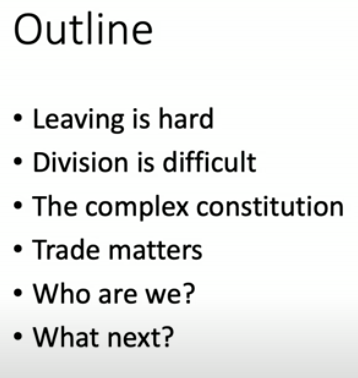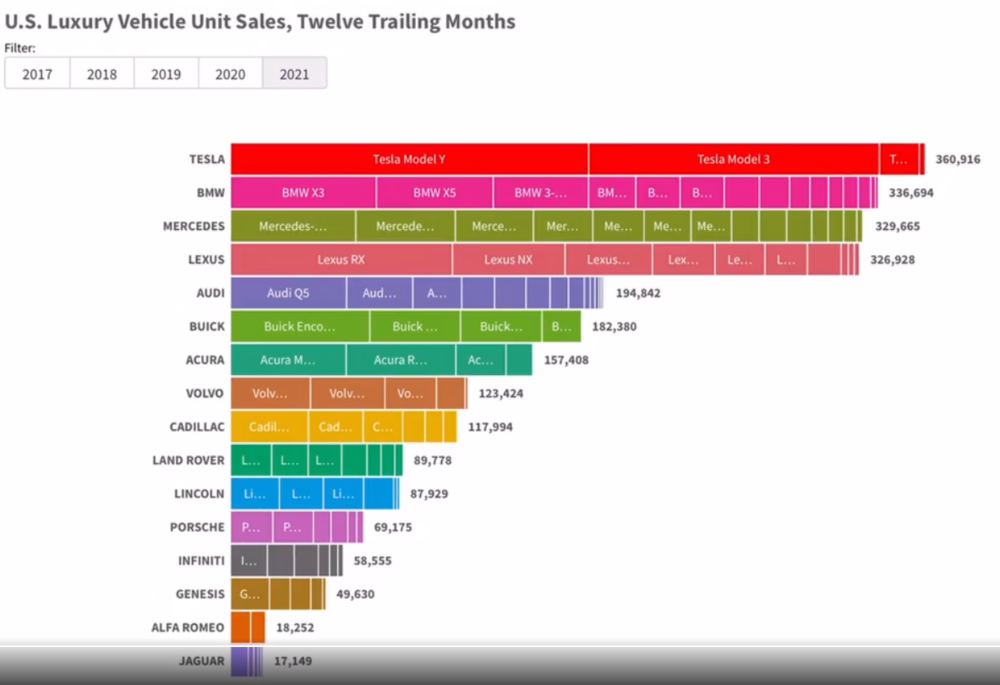-
Posts
1,045 -
Joined
-
Last visited
Content Type
Profiles
Forums
Events
Everything posted by NorthamptonBear
-

Petrol prices hit all time highs.
NorthamptonBear replied to jimmy2x3's topic in House prices and the economy
Tunnel mining is only changing now. It needed some innovative engineers and electrification of equipment to change. eg Montreal extension was $4.76 billion for 3.6 miles of tunnel using OLD tech. Then and Now for Miami: Then: https://en.wikipedia.org/wiki/Port_Miami_Tunnel estimated at $3100 million in 2008, now seems to be quoted (de-scoped?) at around $1000 million for 1 mile of tunnel. However $700 million is quoted in https://www.theverge.com/2021/2/5/22269188/elon-musk-boring-company-miami-tunnel-mayor-francis-suarez Now: Various figures quoted in the media for a 6.2 mile tunnel system in Miami - $30 million ($5m per mile) to around $200 million ($32m/mile). Construction time of around 3 years. The differences in reported costs might be due to scope changes (later phases expected) or whether figures include stations, vehicles and other aspects or purely tunnels. Alternatives were around $1000 million - so at least 5 times the expense and alternatives would have meant years of construction noise and congestion (I don't think these were tunnels, probably light rail or additional roads). Sources: https://www.teslarati.com/elon-musk-boring-company-north-miami-beach-loop-proposal-cost/ So between $5-32 million per mile in a built up area without existing routes having to suffer years of construction delays. Roads In 2006, according to https://www.theguardian.com/society/2006/dec/13/guardiansocietysupplement3 That was 16 years ago. According to https://www.bankofengland.co.uk/monetary-policy/inflation/inflation-calculator - £10 has become £15.40 in 2021 (no option for 2022 yet). I'd guess it's rather more than that. So I'd compare 2006's £10m/mile/lane (and loads of inconvenience) to 2022's £3.68-23.54 per mile. Tunnel tech will only improve with more widespread use. Without details on scope of the Miami project, it's hard to tell the per mile cost. Las Vegas Loop Las Vegas was a "firm fixed price" bid at $47 million for just over a mile, but the other sections (51 station map here - https://www.boringcompany.com/vegas-loop) are being done now eg something like 1.3 miles to Resorts World and more to follow https://interestingengineering.com/musks-boring-companys-prufrock-1-tbm-surfaces-at-vegas-loop-station video here - -
Interesting, thanks. Biggies seem to be Who - Start - GWh/year Tesla - n/a (my guess 2023, maybe 2022) - 120 Northvolt - 2023 - 60 Samsung SDI - 2018 - 50 Italvolt - 2024 - 45 Freyr -2023 - 43 Morrom? - 2023 - 42 Lots of facilities at stated rates of 20-40 GWh per year and lots of small ones. For context, 120 GWh at 85kwh/car would be 1.4 million vehicles. These would all be 4680 cells (high nickel). LFP cells (for Standard Range models) would presumably come from CATL and others and most likely prismatic (fine for LFP). CATL supply Tesla with fully formed battery packs - so no assembly required.
-
In case people don't know, historically for Teslas you pay LEAST of 1) Price at order 2) Price of a NEW order at the delivery time So if price goes £50k to £55k you pay £50k. If it goes £50k to £45k, you pay £45k. So, I'd suggest one (or more) £100 reservation fee is a great hedge for car-price inflation. Resale price can even be higher than new prices due to scarcity.
-

Petrol prices hit all time highs.
NorthamptonBear replied to jimmy2x3's topic in House prices and the economy
Ideally transport (will need to be electric) will switch to tunnels (cheaper than roads to build and definitely cheaper to maintain, no winter weather), above ground will be available to people. Pollution kills, debilitates and harms children, working age people and older. Huge load on NHS, wasted opportunities, needless suffering. https://www.bbc.co.uk/news/uk-england-london-60423340 -

Petrol prices hit all time highs.
NorthamptonBear replied to jimmy2x3's topic in House prices and the economy
As these zones proliferate and enlarge over time and as they start to cover travel corridors, using an ICE will become inconvenient and expensive. Sat navs will have to have "avoid Zero Emission Zones" as an option and routing will become a nightmare. The UK has a few, more proposed. EU will have ones, so using an ICE abroad will need research. Check your car here - https://vehiclecheck.drive-clean-air-zone.service.gov.uk/vehicle_checkers/enter_details Now https://www.gov.uk/clean-air-zones (plus London of course) Use this service if you’re planning to drive through clean air zones in: Bath Birmingham Bradford (charging starts in 2022) Bristol (charging starts in late 2022) Greater Manchester (charging starts on 30 May 2022) Portsmouth Soon/Proposed Aberdeen, Dundee, Edinburgh, and Glasgow https://www.fleetnews.co.uk/fleet-faq/what-are-the-proposed-uk-clean-air-zones-caz Edit: More Paris info - not sure if latest - https://urbanaccessregulations.eu/countries-mainmenu-147/france/paris - pedestrian only zones, zero emission zones -

Petrol prices hit all time highs.
NorthamptonBear replied to jimmy2x3's topic in House prices and the economy
Google search - kerb weights - similar. Model 3 might lose 300 kg when megacastings are used. [Edit:300 kg for GIGAcastings and structural 4680 battery pack - was in rush when posting. Estimated difference in weight between Fremont and Texas Model Y] BMW 3 series: 1,520 to 1,955 kg Tesla Model 3: 1,726 to 1,847 kg -

Petrol prices hit all time highs.
NorthamptonBear replied to jimmy2x3's topic in House prices and the economy
Fully laden. The Semi is more streamlined and the rest of the tractor unit will be lighter than an equivalent diesel HGV, helped by cells and glue forming a strong structure (4680s are cooled top and bottom). The difference in diesel volumes may be UK vs USA HGVs. Google not being very helpful with the results of searching. -

Petrol prices hit all time highs.
NorthamptonBear replied to jimmy2x3's topic in House prices and the economy
Few ICE will be sold after 2026, only niche vehicles. Uneconomic or impractical to use after 2040 at latest (zero emission zones, cost). Anyone buying an expensive ICE now is gambling on resale prices not collapsing. Leasing transfers the financial risk to the lease company (often linked to maker, leading to headaches for them or lease-bond holders). Still doesn't help with zero emission zones and running costs. -

Petrol prices hit all time highs.
NorthamptonBear replied to jimmy2x3's topic in House prices and the economy
Repairing something engineered to last warranty plus a week or a few miles is planned obsolesce. Best illustrated with washing machines, a company's stats monkeys will work out a typical lifetime and the parts will be engineered to last not much longer. Older washing machines and dishwashers will keep working. EV advantages - it's possible, likely that you'll say none of these interest you - but they might for others (few off the top of my head) Defrost/preheat car - car might ask you if you want to defrost at this time every workday (if it detects a regular pattern), or you can use a scheduling function or your app when about to leave work or on the train. No ice scraping, defogging windscreens, leave car parks before colleagues snarl up local roads. Fully charged every day if you have a charger at home. Cue arguments about 40% without who can use work, supermarkets, streets, rapid chargers every 7-14 days. Performance, even modest EVs will probably win a 0-30 "traffic light race". Can be useful when there is a need to change lane. Certainly useful for safer overtaking No gear changes (less wear and tear on tyres although FUD says more as heavier, it's the gear changes, even in an auto that wears tyres) No kickdown, fumbling for or wrong gears when you need to overtake Low fuel cost Low maintenance cost - especially brakes No/lower need for services Less brake wear Low centre of gravity, excellent moose test and manoeuvrability, unlikely to flip or lose control Less self-pollution leading to impaired thinking, impotence, Alzheimer's, asthma and other illnesses - your own ICE car will harm you - https://www.theguardian.com/environment/2021/may/03/air-pollution-spikes-may-impair-older-mens-thinking-study-finds Not polluting others - particularly in basin geographies - noticeable that worldwide and particularly in Northern Italy, covid deaths matched historical air pollution maps, two causes commonly stated were pre-existing harm to lungs, brains and other organs reducing ability to cope and also that viruses can be carried and ingested on small particulates Higher availablity, as less likely to go wrong or need servicing Extreme weather - up to 4 days heat when fully charged with no risk of asphyxiation or tailpipe being buried under drifting snow - in case of being stuck in snow or home electricity cut off like Texas or recently in UK, even tonight (and for most people losing electricity also impacts gas or other heating). Note that garage fuel pumps rely on mains electricity - electricity out, petrol out. If you have solar + an isolator switch (standard on new Tesla Powerwall installs) - you can charge car. OR - plug in car and charge during intermittent supply during rolling blackouts. Many EVs can ford or swim with less risk -

Petrol prices hit all time highs.
NorthamptonBear replied to jimmy2x3's topic in House prices and the economy
Very unreliable to unreliable is still unreliable. I've seen quite a few brand new cars (expensive ones at that) broken down shortly after Reg changes. Consumables - you can go a long way (some 400,000 km) on a single set of brake pads (saving a lot of labour cost) on an EV https://thedriven.io/2021/07/03/impossible-tesla-model-s-does-400000km-on-one-set-of-brake-pads/ Self-servicing has downsides. Fewer people can do it. Many cars are leased or require dealer servicing for warranty. Resale prices of nearly new secondhand cars will be affected if not serviced according by dealer to a schedule. Bangernomics is fine for some people, a minority I would guess. I also think that some cars are very reliable and retain value (Toyota, Honda?) whereas others seem to have bad reputations for costs and reliability and resale prices sink like a stone (performance exec cars maybe). https://www.raw2k.co.uk/news/are-bmws-expensive-to-maintain "Out of the top five slots available, BMW cars occupied three of them. The BMW 5 Series cost an average of £585 per year to maintain, while the BMW 1 Series came in at £518, followed by the BMW 3 Series at £486... two key factors which affect the cost of BMW repair - the complexity of their design, and the proprietary nature of their parts. " -

Petrol prices hit all time highs.
NorthamptonBear replied to jimmy2x3's topic in House prices and the economy
Same cargo load (space & weight) as diesel HGVs. Batteries will be 4680 & structural - adding stiffness and replacing some metal/weight in a conventional structure. Weight be will low down, so better ride, better handling. Musk said on Joe Rogan that Semi would have 500kwh structural battery pack. Presumably that's for the 300 mile range Semi, but not certain. That's 5 Model S/X (old style), 2.5 Hummer EVs. Weight will be saved on the structure (only truck company able to access SpaceX metallurgists - probably all legacy ICE HGV makers rely on outside developers of components similar to ICE legacy car companies. I'd be surprised if they had great in-house expertise) more importantly a heavy diesel engine gearbox diesel tank + fuel - 1360kg? and all other fluids - lubricants, coolants etc. Engine - hard to find info - randomly picked HGV diesel - DC16 085A. 566 kW - "Weight 1340 kg (excl oil and coolant)" Battery - https://insideevs.com/news/521840/tesla-semi-480-battery-analysis/ argues that "We estimate that the 500-mile pack will be approximately 875 kWh and 900 Volts DC. Total pack weight (not just cells) of 9243 pounds" or just under 4.2 tonnes for the long range (500 miles) version. That would equate to 2515 kg for a 300 mile version. I haven't crossed referenced that against expected cell weight as these are pack figures & guesses. No idea what a gearbox weighs, must be very heavy duty, unneeded in most EVs, I wouldn't expect one in Tesla Semi, instead the three (?) motors will probably have slightly different gearing and attributes for different speeds. Diesel/fluids - https://www.smart-trucking.com/weight-of-diesel-fuel/ suggests 3000lb is allowed for for diesel ie 1360kg. Then add some more for other fluids. USA though. So adding up battery packs, 3 motors, all other gubbins is probably not much more than a diesel HGV. Remove some weight for structural improvements, multiple purposes for parts, better metallurgy, more and bigger castings - less fixings and I don't think it will be much different from diesel engine + gearbox + diesel fuel + fluids. Tesla consistently engineer in a way that is efficient in space and weight - eg new Model S Plaid integrates air suspension tank with structural members. On a Munro video, a design expert raved about the Model S Plaid's "Packaging Symphony" where many parts serve many purposes "Who else has this?" -

Petrol prices hit all time highs.
NorthamptonBear replied to jimmy2x3's topic in House prices and the economy
A good % of money is for the parts, transport, massive corporations, their PR lobbyists, bribes to politicos, annoying and expensive advertising and of course every other form of rentier in that chain. Local car mechanics might have more demand during terminal ICE car phase. As ICE cars age, more work. Mechanics at dealers will be affected very quickly. Eventually local car mechanics will have less work, the rest of us will look at the idea of servicing schedules with quaint disbelief (like double-de-clutching or learning hillstarts in manuals) We have old and new white goods from the same brand. Old ones much more reliable. Planned obsolesce is a thing... https://www.sciencedirect.com/topics/computer-science/planned-obsolescence https://en.wikipedia.org/wiki/Planned_obsolescence#History My emphasis (hmm, bit like a certain EV maker vs legacy ICE - especially the ever growing BMW beaver grill) -

Petrol prices hit all time highs.
NorthamptonBear replied to jimmy2x3's topic in House prices and the economy
Good observation. I don't know one youngster who passed when less than 20. One or two that did in their 20s for work. Most of their parents seemed bemused, even a bit angry. Some kids started lessons at 17/18 at behest of parents but soon abandoned lessons. I guess it was such a right of passage and essential to previous generations. Not a surprise to me after seeing some insurance quotes. -

Petrol prices hit all time highs.
NorthamptonBear replied to jimmy2x3's topic in House prices and the economy
EV batteries - well designed ones will and do outlive rest of car, have high value for secondary uses (conversions, storage) and eventually be recycled at more than 95% reuse, which will only rise over time. Dig once, use for decades, recycle. ICE owners pays for maintenance, parts, time spent in garages/fixing, public pay for pollution (externalities). Alzheimer's, impotence, asthma, lower IQs, reduced short and long term memory. 9 million people die from air pollution every year. Some from indoor cooking, many/most from ICE air pollution. Think about how removing lead in petrol led to lower crime rates. Breathe in that cobalt used in the fuel refining process. Less ethically sourced than the tiny % used in EV batteries (much lower % than used in phones, laptops) Few ICE cars are sold for a decent profit. Most ICE makers make their money from parts. This is a similar model to printers & ink. ICE car makers rely on failure for profits. Never mind that it often happens at the worst possible time (winter, skint, need to get somewhere). It won't be long before ICE makers wind down to be part suppliers to the increasingly uneconomic aging secondhand market. -

Petrol prices hit all time highs.
NorthamptonBear replied to jimmy2x3's topic in House prices and the economy
Tesla Semi charging requirements are within USA's legal driving/obligatory break-time requirements. Even easier for UK/EU break-time laws. 300/500 miles on full charge (from memory). Same load as diesel, much faster going uphill, less wear on brakes, so a better and safer bet on mountainous routes. Cars & trucks - the more miles you do, the more you save on "fuel", maintenance and time unavailable due to breakdowns and servicing. For air transport, some of the possibilities:- hydrogen - niche only, dangerous, high maintenance and expensive. Promoted by fossil fuel PR lobby groups. Nonsense answer for most uses. Think Big Tobacco & filter tips, "smoked by the most doctors", lies created by some of the same individuals, let alone PR companies involved are the same as those lies. battery - niche until Wh/kg improves. Possible afterwards, especially with dedicated designs aluminium air "fuel cells" - interesting, cheap, but some drawbacks (fuel cell increases weight by 20% during use, aluminium cassette is removed (edit: as quick/quicker than fuelling) & recycled cheaply and isn't recharged). alkanes - methane etc - could be used in hybrids - much better than hydrogen in most ways apart from local airport emissions, but miles better than current emissions. having surface EVs reduces pollution around airports a lot. Somewhere like Heathrow, not sure which emission sources are the worst. -

Petrol prices hit all time highs.
NorthamptonBear replied to jimmy2x3's topic in House prices and the economy
Yep. And then you get to experience the many advantages of EVs. -
It's all logical. Other option is Single Market/Customs Union for GB. Current dishonest, dysfunctional, corrupt UK Gov seems to have a choice between being rule takers and rule breakers. To be fair any future UK or Wengland government would have similar choice. Even harder if Scotland goes independent. Just higher stakes for Scotland during transition period from GB to EU rule adoption, so that may keep Scotland in UK. If it's just Wales & England left, what a mess the English Nationalist party has created.
-
What have we learned > What happens next (thread title after all) Some observations about lecture "It will hurt banks and house prices" warning had different effects in different parts of the country and with different kinds of people! "Bring it on" from many Few people have changed their minds Older voters generally leavers, younger remainers/joiners Demographics, not changed minds changed polls Non-tariff barriers much more important in restricting trade Prospect of Brexit restricted economy Few, if any benefits. One mentioned was changes to farming support. I think a few farmers might not agree UK Government actively suppressed publication/analysis of economic effects. Forecasts overwhelmingly negative on how Brexit would affect economy Question from Brexit voter handled with respect (I didn't really get what they were asking/saying). Population were divided along different lines, not left-right economically, more on culture war lines Returning to left right lines more recently Rallying the troops around Brexit less effective and could backfire
-
Tesla Total Cost of Ownership (TCO) - leading to cheaper lease rates Low depreciation (appreciation) Low/no maintenance Low cost per mile (electric/efficiency) Company car benefits eg Benefit In Kind taxes Convenience/Usability Charge at home or work. Plug-in in seconds, do something else while charging Charge reliably on long trips Very comfortable, eating miles, not tiring Low Emission Zone friendly Just works, effortlessly, systemic design including Superchargers Good performance Only EVs with a reliable track record available in large numbers with sufficient cells to allow expansion to 5+ million cars (CATL, LG, Panasonic, Tesla, probably more as Tesla is the most reliable customer. LFP, high-energy cans - Tesla will not use dangerous form-factors like high-nickel pouch cells)
-
USA built ones were being discussed. Note that Sandy Munro said (in your link) "as good as anybody could possibly do" regarding the other Model 3 he'd just inspected I've never heard a complaint about Made In China cars other than BMS for LFP models in cold climates (fixed quickly with Over The Air update, improved again since). Whether this is a result of the workforce or factory in California (ex-Toyota/GM) or that a ramp was in progress (changes to processes) isn't clear.
-
My understanding (and supported by quick google search) was that the Nissan Leaf is ambient air cooled and Renault Zoe is forced air cooled. Nissan Ariya has a water cooled system. Leaf and Zoe probably both fine for UK (especially new Zoe that can CCS and handle longer trips,) as long as no extreme temperatures. Early batteries/years probably best avoided though.
-
November isn't a peak delivery month. Even so, the TOTAL VALUE of these Zoes and Springs are probably not MUCH less than the Teslas. 2022 will have Berlin deliveries, much closer, lower taxes (no EU import tax). Spring is €12,400 after incentives (not sure about before incentives) Not sure about Zoe prices in France - it seems to be 32k-33.5k according to Renault France website (not sure if incentives kick in, they probably have been designed to support the Zoe) Teslas start at €44,000, but Model Y start at €60,000. I think all of these are above incentive cut-offs (apart from maybe base Model 3, white, no options) So I think Tesla have a good chance of delivering a higher value of sales than all other EVs in France in 2022, depending on Berlin ramp.
-
Source? That seems to be Europe only, not France. France EV sales recently have been low cost models New Berlin factory will take time, but will get to 2+ million relatively quickly. Tesla have guided for 1.4+ million vehicles for 2022 from just their 2 smaller factories of Fremont and Shanghai. Berlin and Austin will slowly ramp this year, probably taking over a year to reach 500,000 to 1 million each, more later on. Fremont and Shanghai produce 2-4 models, Austin and Berlin will concentrate on the Model Y, leading to the Model Y being the best selling car (initially by value, later by number). https://insideevs.com/news/563416/tesla-market-share-growth-2021/






